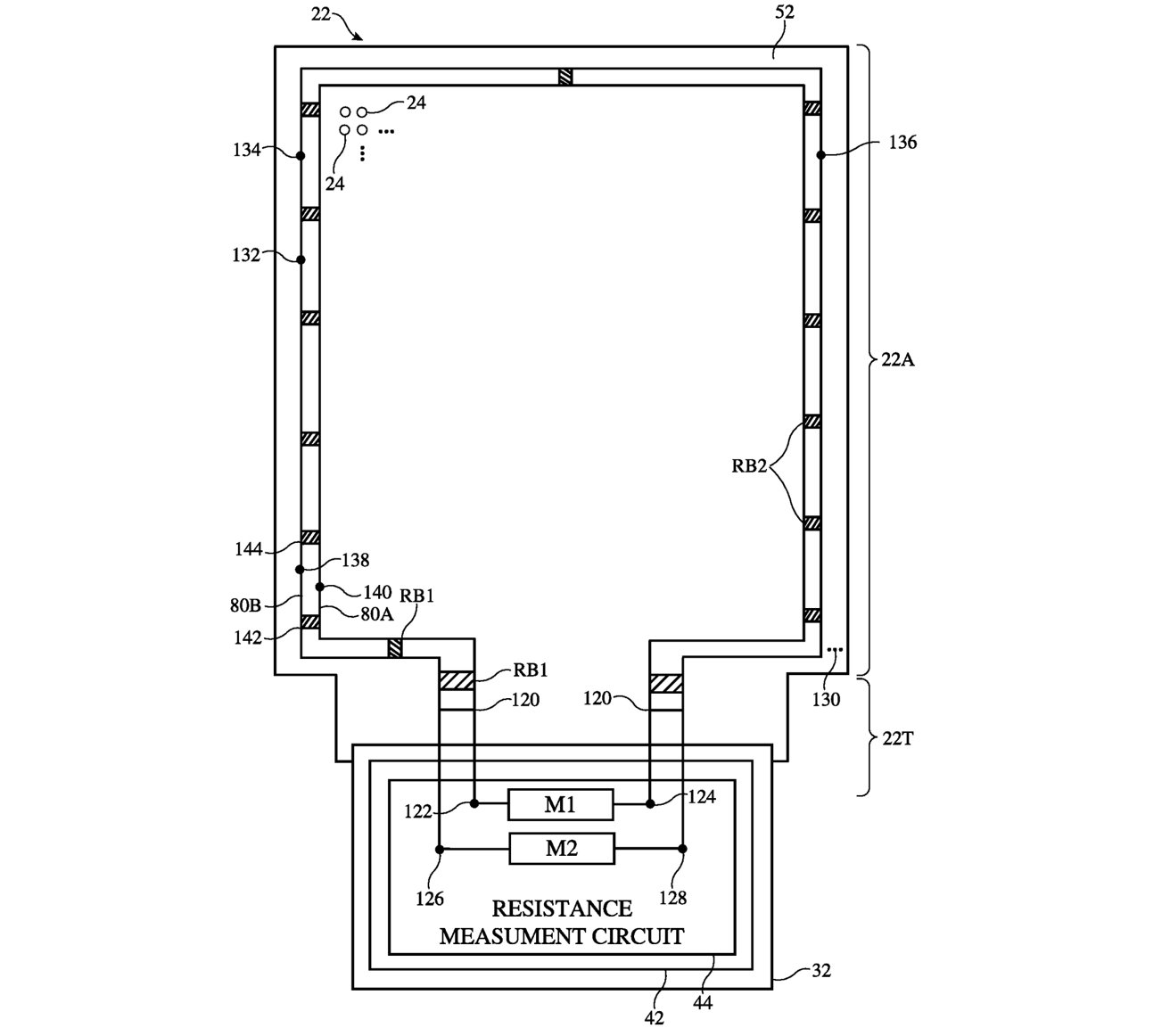[ad_1]
A future iPhone could warn its owner of damage to the display by using a crack detection resistor to determine if there are any breaks in the screen — and as proposed, the technology would work on an “iPhone Fold” too.
One of the common issues iPhone owners encounter is screen damage, with the glass component able to break from impacts or under too much strain. While in many cases an iPhone should be repaired straight away, some users instead find the display continues to work fine enough to continue using, without that vital repair.
It’s also possible for a display to be marginally damaged, but not enough to be easily noticeable by the user. This small chip or crack could lead to more serious cracks down the line.
With the onset of smartphone designs with bent or flexible displays, it becomes even more of a challenge to introduce systems to detect those cracks, and to warn users of their existence. This is especially the case for foldable smartphones, which have a greater chance of developing cracks through normal use.
In a patent granted by the U.S. Patent and Trademark Office on Tuesday titled “Electronic device display with monitoring circuitry utilizing a crack detection resistor,” Apple intends to solve that very problem.
Apple’s proposal is to add an extra section to the edge of a display, which it refers to as a “bent tail portion.” This section is used as a way for the display to interface with the rest of the smartphone, as well as to house extra components used for crack detection.
A strain-sensing resistor could be added to the bent tail to acquire strain measurements, accompanied by a nearby temperature compensation resistor. Both could be created using “meandering metal traces” that run perpendicular to the bend axis of the tail.
While resistance measurement circuity n the display driver could measure the resistance of both resistors, it then must subtract the temperature compensation value from the strain-sensing resistor for a proper strain measurement. The thinking behind this is that a warm display may be more pliable than a cold version.

Along with this, Apple suggests it could create a crack detection line using an elongated pair of traces in a loop. The line could follow around the edge of the flexible display, starting and ending at the tail.
The resistance of the crack detection line can be monitored to determine if there is a crack, with a high level of resistance indicating one exists.
A shift register in the display driver gate circuit could include switches that are positioned along the crack detection line at various points. The switches could be used to shorten the length of the line, therefore the signal path.
By measuring the resistance of different lengths of the same line, the device could determine regions of the display that have cracks, and which are unaffected.
The patent lists its inventors as Prashant Mandlik, Bhadrinarayana Lalgudi Visweswaran, Izhar Z Ahmed, Zhen Zhang, Tsung-Ting Tsai, Ki Yeol Byun, Yu Cheng Chen, Sungki Lee, Mohammad Hajirostam, and Sinan Alousi. It was originally filed on February 13, 2018.
Apple files numerous patent applications on a weekly basis, but while the existence of a patent indicates areas of interest for Apple’s research and development efforts, they don’t guarantee the idea will appear in a future product or service.
Crack detection has surfaced in a few patent filings in the past, with slightly different methods and applications.
In 2017, Apple’s “Coverglass fracture detection” suggested using a network of sensors and a piezoelectric actuator to detect the formation of cracks on an iPhone’s display. Pulses of light flowing through the glass have also been suggested, with cracks and imperfections being picked up by sensors.
The concept isn’t limited to just iPhones, with the rumored “Apple Car” appearing in one 2020 patent explaining how a vehicle’s windows could use an infrared light-blocking layer and a conductive layer to help determine the presence of cracks.
Apple has also proposed ways to counter the wear and tear of foldable smartphone displays, with one patent application from October 2020 suggesting a “self-healing” display using a mix of rigid and flexible areas.
[ad_2]
Source link
